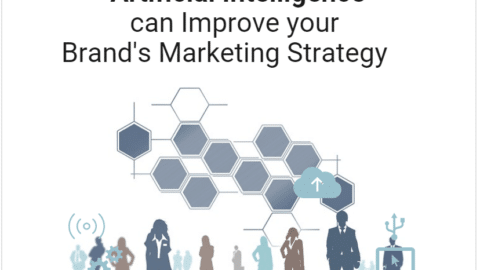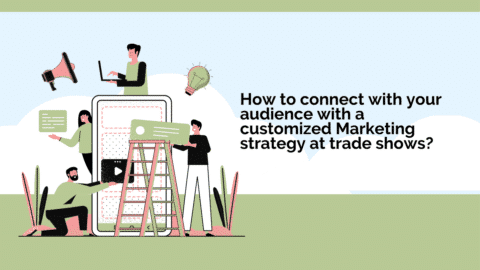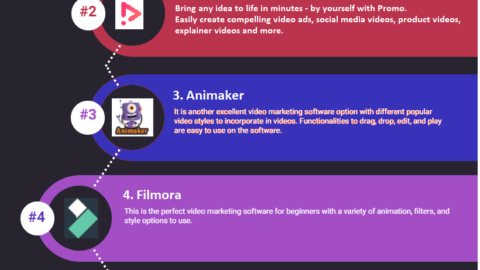Can 3D Visualization Revolutionize Marketing and Boost Sales?
In today’s market, companies either thrive or are left behind. Competition is fierce, so businesses need innovative ways to reach new customers. Thankfully, companies can use some “tricks” to get ahead in the game. Since we live in a digital world where everything is visual and fast, 3D visualization is just what marketers need. When used properly, businesses will notice a significant drive in sales. The reasons behind 3D visualization becoming a popular tool in the marketing industry are quite simple. It offers a wide range of benefits to increase brand awareness, drive sales, and improve customer engagement and loyalty. 3D product visualization configurators create three-dimensional representations of services and products. Imagine the importance of this in the marketing industry.
Table of Contents
Companies can showcase and display their products online, and customers can explore and see them from every angle. But there is more to that. This technique creates an immersive experience for potential customers – One that when done right, they will never forget. To leverage this technology, the first thing you need is a reliable, high-quality 3D product configurator.
What is a concept of 3D visualization?
The concept of 3D visualization involves creating realistic and interactive representations of objects, spaces, or ideas using computer-generated imagery. It allows users to visually explore and interact with three-dimensional virtual environments, providing a more immersive and engaging experience compared to traditional two-dimensional visuals.
How do I start a 3D visualization business?
To start a 3D visualization business, you need to follow these steps:
- Acquire the necessary skills and expertise in 3D modeling and visualization.
- Define your target market and services.
- Set up your business structure and register it.
- Invest in the required software and hardware.
- Build a portfolio and establish an online presence.
- Market your services and network with potential clients.
7 Ways to Use 3D Visualization for Marketing Purposes
According to Statista, in 2019, the 3D rendering software market revenue was $1.63 billion. However, experts speculate that the 3D rendering software market can grow up to $9.61 billion by 2030 – Meaning that society will only continue to digitize and become more reliant on software and technology. Thankfully, this is good news for the marketing and 3D visualization industries.
While 3D visualization technology is relatively new, it has already revolutionized how businesses market their products. The primary way they do so is through product visualization, but there sure are other noteworthy techniques to make the most of 3D product configurators.
#1 Product visualization
As mentioned above, Product Visualization is the most effective and popular way to use 3D visualization in marketing. It consists of showcasing products and creating 3D models to offer an interactive or immersive experience to clients. It mostly helps companies stand out from competitors who still stick to 2D images and videos.
These configurators work in real-time, allowing for real-time changes and seeing immediate transformations. It allows users to rotate, zoom in and out, examine all the details, and more. It strips the product to offer transparency, so to speak. Which, in return, increases customer trust.
#2 Interactive presentations
Following the previous point, marketers can use 3D product configurators and 3D models to create interactive presentations of the product. This way, professionals can demonstrate how the product works live. We have seen this with many products already, in videos where the product moves and we can see its many angles.
But imagine allowing customers to see it live, ask any questions, and even come up on stage and do it themselves. It makes it all feel more real. And if the customers really did have a good time and experience at the presentation, it very well may lead to word-of-mouth marketing and boost sales. Another point for marketers.
#3 Making up for the lack of touch and feel
When customers embark on a buying spree, they want to feel and touch the products they intend on purchasing. However, massive companies like Shein or Amazon have succeeded without providing such services. Imagine the impact of seeing the clothes on your body or testing whether your hand is the ideal fit for that new mouse you want to buy – And all of it before you go through the purchase.
#4 No more product shootings
Any marketer worth their name knows the cost and effort that come with product shootings. Renting a studio or location, hiring a photographer, taking dozens or hundreds of photographs, editing them, coordinating everyone on the team, and an endless list of etceteras. Not to mention that some products are challenging to capture in an image, which makes them look dull, lifeless, and unattractive to customers.
However, creating 3D models of said products is much more comfortable for the professional marketer and for the customer on the other end. Owning a 3D product configurator and knowing how to fully exploit its power will relieve stress for marketers. They will be able to focus on other tasks and competencies that are as or even more important than a photo shoot.
#5 Appeal to sensory experiences
With or without social media, humans are visual creatures. Seeing a product in a three-dimensional way becomes a powerful sensory experience. Do you remember when people first experienced Virtual Reality? It was as if no one could believe it. It was such a challenge for our brains to understand at the moment what was happening.
The same holds true for 3D models. Mixing virtual reality and 3D visualization can lead to sensory experiences that will make such a positive impact on the customer that they will drive sales, customer engagement, and loyalty.
#6 Selling through gamification
Everyone loves a game, and that is why apps like Duolingo work so well. They reward users for completing a task and encourage them to return again and again. That is called gamification. And it works incredibly well in the marketing industry. Now, the only thing that is left is finding a way to mix it with 3D visualization.
Here are some ideas: businesses can create a 3D game that allows users to virtually try on clothes before purchasing them. Or create a car simulator that allows customers to test drive several before making decisions. It would surely make people feel more confident when buying.
#7 Reaching customers online
Facing the reality that more and more customers prefer to shop online is the way to build a stable and successful business in the long run. According to Statista, the number of people purchasing online is ever-increasing, with over five billion internet users worldwide. Yet many customers are reluctant to shop online and prefer in-person stores. 3D visualization could help bridge this gap, providing more assurance to customers.
Will 3D Visualization Boost Your Business?

Answering this question becomes tricky because many factors come into play. If your organization has the budget and a solid company strategic vision to implement such 3D visualization, sign up for it. It will most likely attract potential customers to your store, create brand awareness (which is a crucial concept in 2023), and more. To be honest, 3D visualization and 3D product configurators are an investment that can result in significant ROI benefits. However, there always comes a risk with an investment, and that is a rule you ought to keep in mind. If you have the budget and confidence of an established and growing firm, go for it.
On the other hand, you should be much more careful if you run a startup or are the marketer of a small-to-medium company. These usually have limited budgets, and one mistake can have substantial consequences for all employees and stakeholders. Holding a meeting with relevant people from the company to explain the advantages and potential downsides can be the first step to incorporating 3D visualization into your next campaign.
Last but not least, the answer depends greatly on the type of product you sell. Showcasing and customizing a tangible product online is way easier than doing the same thing with a more “abstract” service or complex product. Thus, these types of questions must be addressed before making any decisions the company might regret.

Ananya Prisha is an enterprise level Agile coach working out of Hyderabad (India) and also founder of High Level PM Consultancy. Her goal has been to keep on learning and at the same time give back to the community that has given her so much.











